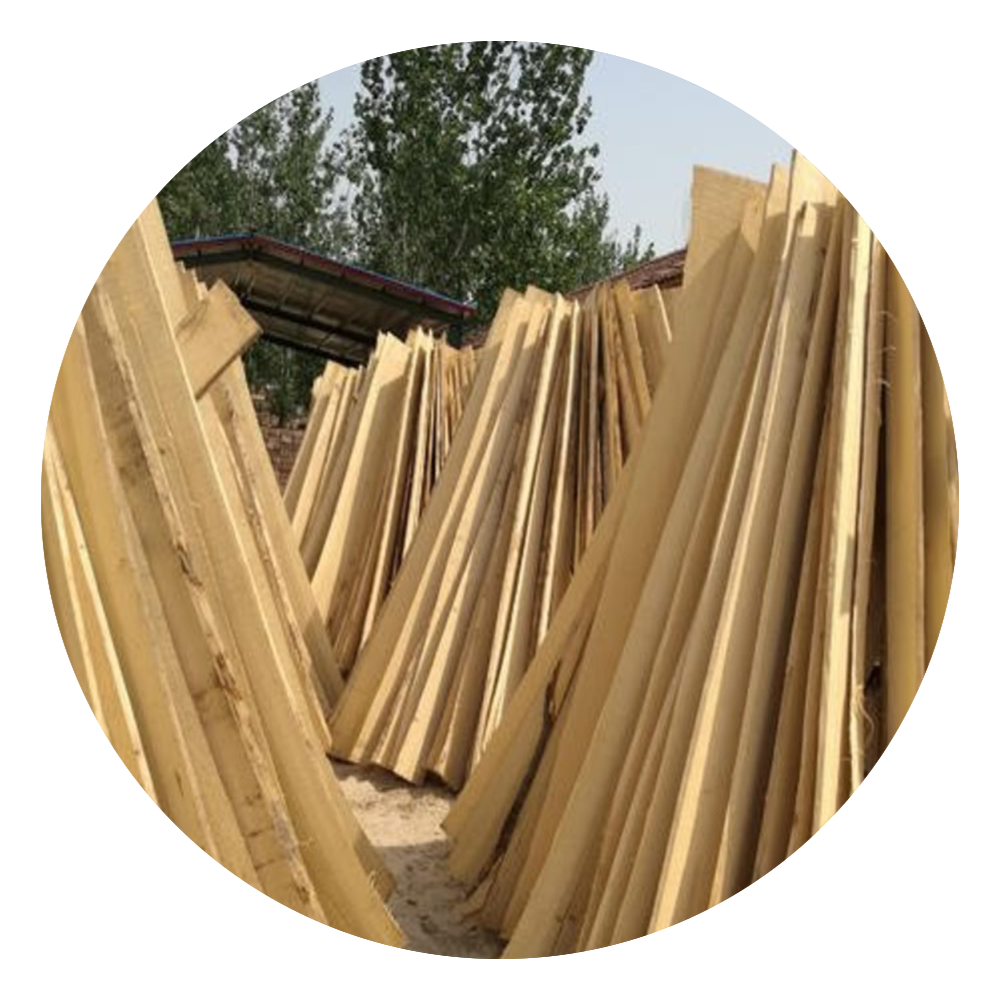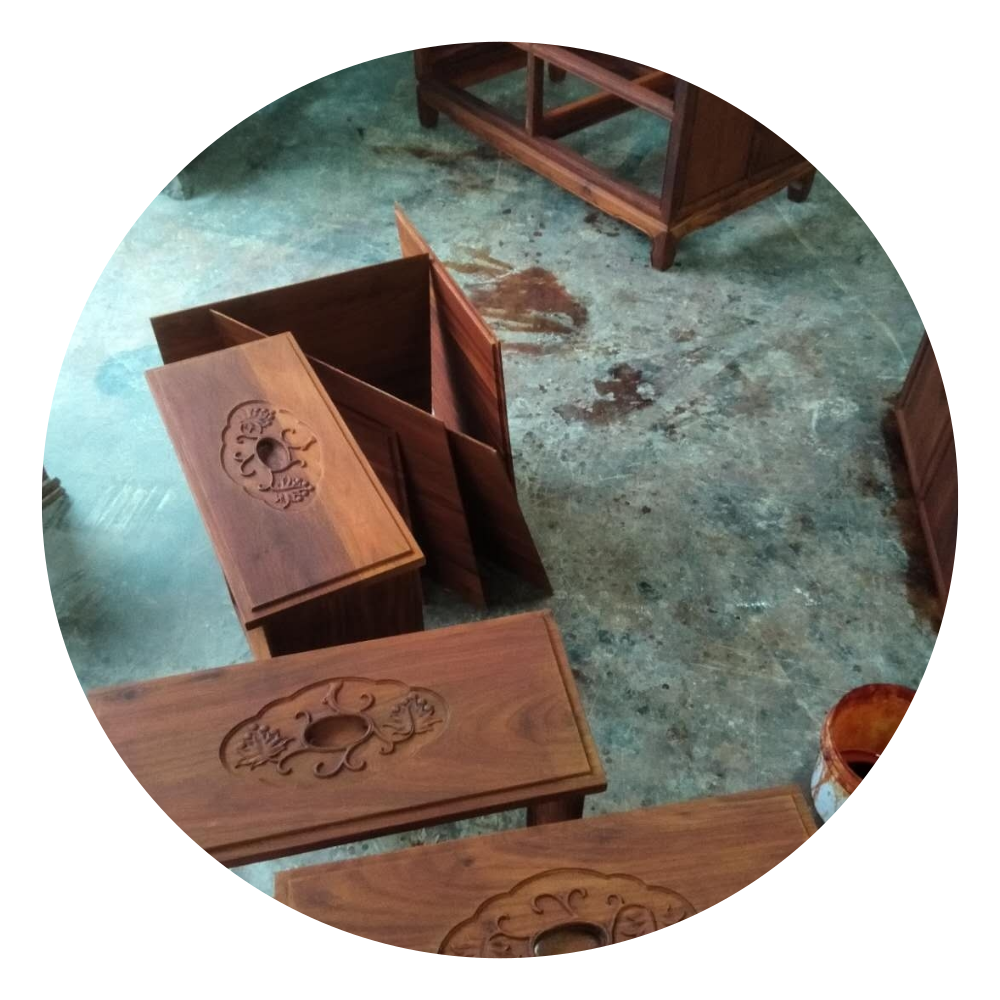Rosewood furniture production process
Rosewood furniture began in the Ming Dynasty. Its simple and symmetrical appearance, natural color and pleasant texture are popular among the public. Furniture is mainly manufactured using traditional techniques such as carving, tenon, inlay, and curve. These three basic rules of rosewood furniture are: if not necessary, absolutely do not use wooden pins; where possible, do not need to be glued; no iron, nails and adhesives are used anywhere. So many people call rosewood furniture humanistic furniture and artistic furniture.
Process 1: Crude wood sawing board
After the crude wood are purchased, they are first shipped to the sawing board factory for processing and cutting. In order to cut into plates that respond to specifications.

Crude wood

Sheet Cutting
Process 2: Wooden board Drying
Drying is generally divided into two stages. Natural and drying room drying

The first stage is natural drying. When it is sunny, it is placed under the sun to evaporate moisture by heat to reach the goal of air drying. The general water content will drop to 20% -30%.
natural drying

In the second stage, the board will be transported to the special drying room for drying, the moisture content is 8% -12%, drying is an important part of the production process, because the wood after drying treatment can improve the mechanical strength of wood And dimensional stability, reduce wood deformation and cracking.
drying room drying
Process 3.1: Selection & Cutting

Carpenter chooses wood according to the design drawings and the texture of the wood, the light and dark colors and the size of the wood, so as to choose the appropriate wood to manufacture different parts of the furniture.
After selecting the wood, the white skin part and the broken residue part will be cut off, and then the wood will be cut into the standard timber according to the size required in the opening bill. The timber is flat and elegant.
Process 3.2 Sketch & Round

Sketch refers to placing the planned template pattern on the part, drawing it in from the outside with a pen, and using a saw machine to cut out the ups and downs according to the outlined lines. The important goal of rounding is to make the outside look more rounded and feel smooth.
Process 4 Tenon & Mortise
The main structure of rosewood furniture is connected with tenon and mortise. The tenon-and-mortise structure has the “joint” function of the physical structure on the furniture. The tenon-and-mortise structure design cleverly combines high and low, long or short between different wooden parts. Needs a nail, but it is stronger than using "nail" furniture structure


Process 5 Carving
In order to make the rosewood furniture look more beautiful, some simple or complex patterns will be carved to decorate. The common forms of modern rosewood furniture are wire carving, embossing, hollowing, round carving and silk carving ..

Most of the furniture is now semi-handcrafted / half-machined. Even after the machine-engraved pattern, still need to manually complete the pattern. For example, the part that cannot be completed on the machine-carved, such as the three-dimensional feeling inside the leaves, requires the engraver to hand Carved out.

Another example is the peculiar bird pattern such as peacock, the feather part of which can only be carved by hand with a knife.

Process 6 Assemble

After assembling the tenon-and-mortise wood, assembling according to the drawings of each part, the prototype of a piece of rosewood furniture will come out.
Process 7 Scrape & Polish

To smooth the surface of a piece of furniture, it is necessary to use a machine and a hand to scrape the rough part in the same place, then grind away the rougher parts, and then use sandpaper or some sanding from 100 to 800 The tool is smooth to the touch, so it takes an average of about half a month to comb a set of sofa.

Process 8 Painting -- raw lacquer
" The raw lacquer-like liquid harvested from lacquer trees by raw paint turns brown after contact with air, and the surface hardens after a few hours to form a patent skin. "

The rosewood furniture that has been lacquered must be taken to the paint booth. The paint room is very special, it must have both temperature and humidity. Raw paint is easy to dry under such conditions. After the furniture is dry, take it outside and polish it with fine sandpaper. After removing the floating paint, apply a layer of paint before entering the paint room and dry it. Repeat this 3-5 times. After many repetitions, it is ensured that the paint can penetrate into the wood well, rather than just attach to the wood surface.
Raw lacquer is a natural green environmental protection paint, which has the characteristics of corrosion resistance, abrasion resistance, acid resistance, solvent resistance, heat resistance, good water insulation and insulation, and rich gloss. Durable color. It can be well matched with wood. With the age of use, the color of the primer is revealed, and the brighter the lighter, the better.


